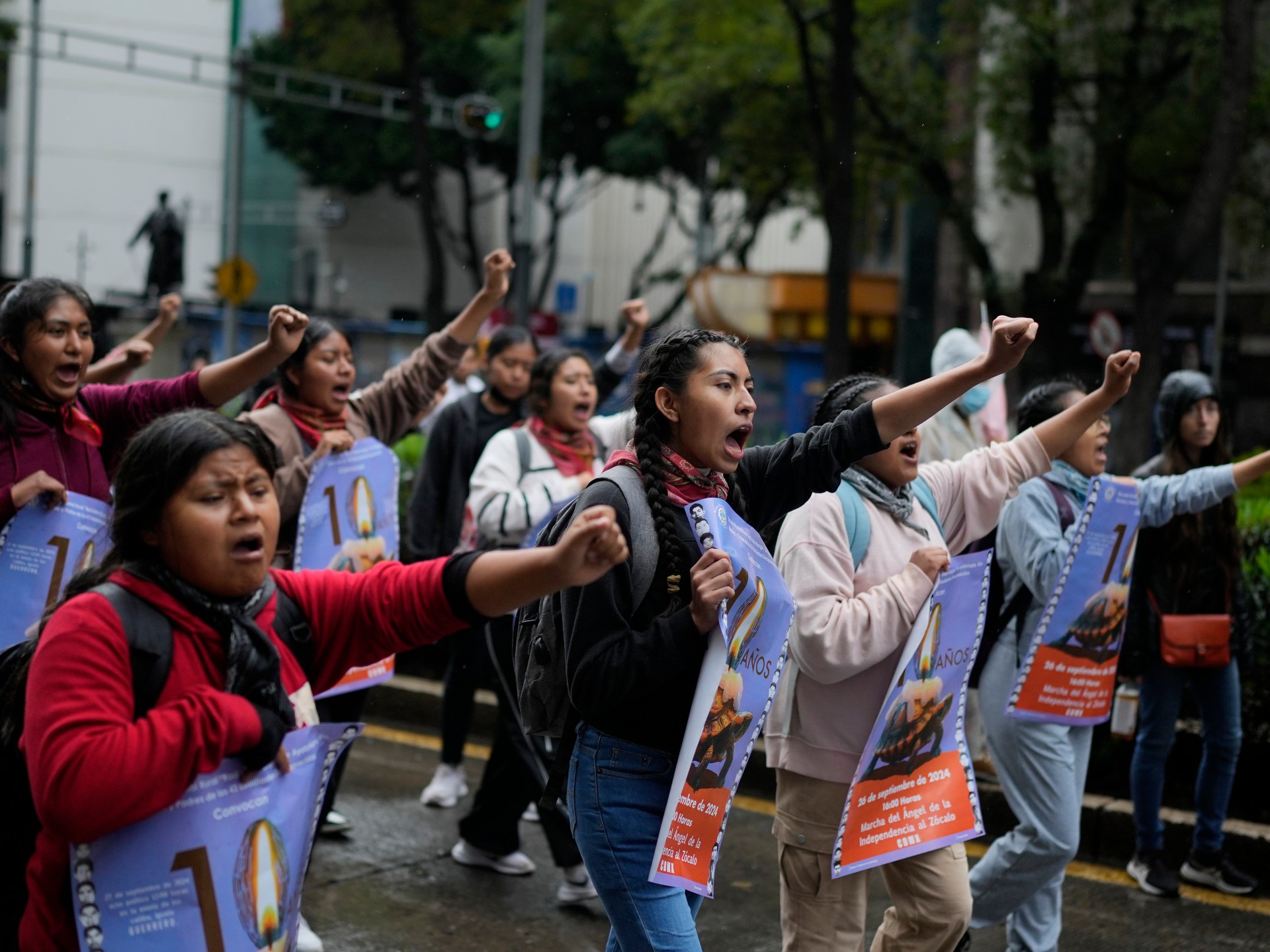A tradition of protest
Mactumatza, the school Vasquez attended, is located on the outskirts of the city, not far from the highway where he died.
It is part of a nationwide network of government-funded normal schools, also known as teacher training colleges, where low-income students can enjoy free tuition and board.
Mexico’s history of normal schools stretches all the way back to the 1910s and 1920s, when the country was emerging from its revolutionary period. Many of the schools’ curriculums emphasise social justice, and students are encouraged to take jobs in underserved communities.
But that revolutionary spirit has also made the normal schools hotbeds for activism. “Normalistas”, as the students are called, have a long tradition of protest.
Sometimes they block highways. Other times, they occupy toll booths. One of their most famous activities is the nonviolent commandeering of local buses: The practice is so common that many bus drivers know to simply step aside when their vehicle is boarded.
Professor Tanalis Padilla, a historian at the Massachusetts Institute of Technology, said the public reaction to such protests has been mixed. Some people support the students wholeheartedly. Others, she said, express annoyance at “the radical kids out there again on the streets”.
According to Padilla, negative news coverage has contributed to that scepticism. “It’s safe to say the media has always been against them, calling them vandals and things like that.”
Padilla explained that this perception stems from the educational programme at the normal schools, which is rooted in socialist and collectivist politics.
“With the Cold War in the ’70s and ’80s, the media would portray the schools as hotbeds of radicalism and social disturbance,” she said.
Over the years, numerous normalista protests have culminated in violent clashes with police — and even death.
The most infamous incident took place in September 2014, when 43 students from the Ayotzinapa Rural Teachers’ College, another normal school, took over a bus in the state of Guerrero. They planned to use it to join a protest in Mexico City.
What happened next remains unclear. But it is believed that the students were kidnapped and killed with the knowledge of local law enforcement.
Not a single one of the students was ever seen alive again. Charred remains belonging to three of the Ayotzinapa students were later identified using DNA testing.
The Ayotzinapa case garnered widespread outrage and support for normalistas in Mexico and abroad.
Source: Aljazeera

Leave a Reply